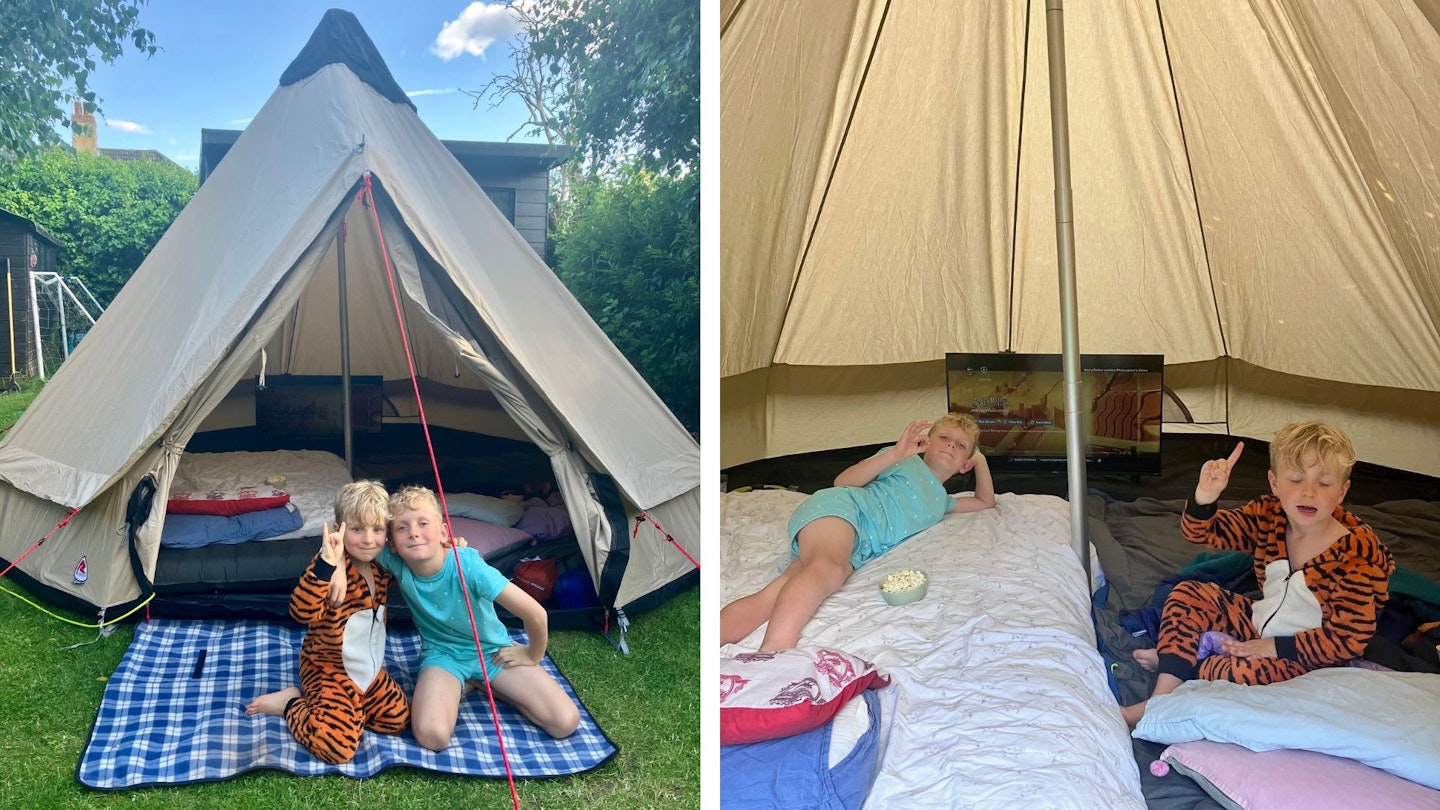The Robens Klondike may not look like a stereotypical family tent, which usually come loaded with dozens of features like separate bedrooms, stash pockets and multiple entrances. But if you're looking for a stylish bell tent that will be the envy of every campsite you visit, this could well be it.
We're huge fans of Robens at LFTO. Their Eagle Rock 6+2P model has been our 'Best in Test' family tent for the past couple of summers, plus we've been using their smaller Fairbanks bell tent for five or six years and it's still going strong. But the Klondike offers something completely different – sleeping space for six people in one cavernous teepee-style tent, which is even designed to add an optional woodburning stove for some serious luxury.
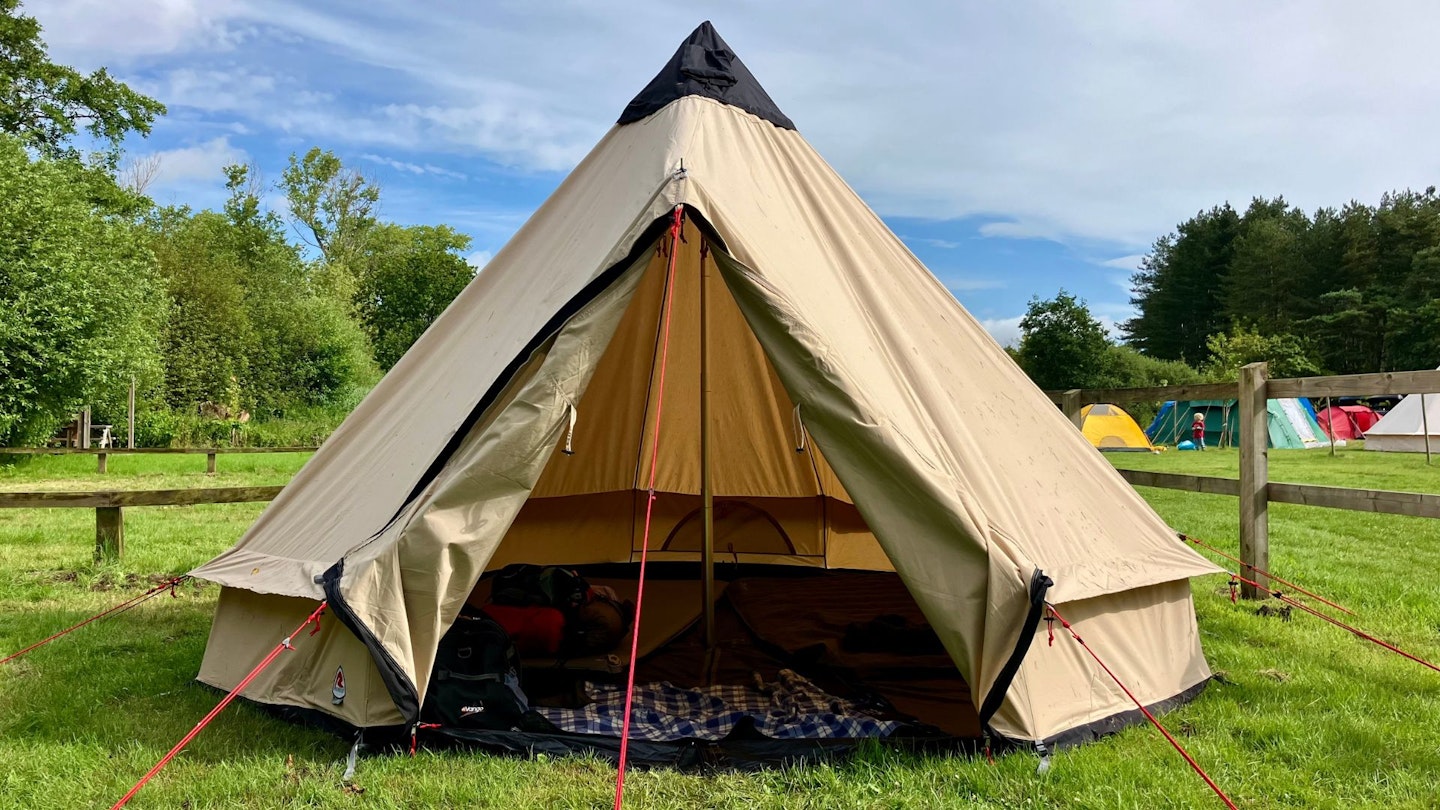
And the good points don't stop there. Our testers have been massively impressed by the quality of the materials, the relatively small packed size for a tent this big, the simplicity of pitching it, and the well-thought-out little touches like internal vents, and even a zip-off groundsheet which makes it quick and easy to dry.
Several members of the LFTO and Trail magazine teams have used the Klondike for group and family camping trips recently, so read on for our rundown of the key features of this excellent bell tent, plus a full review of how it performs in all types of weather conditions.
 LFTO
LFTOwww.cotswoldoutdoor.com
Pros
- Stylish bell tent design
- So simple to pitch
- Packable and portable
- Huge living area
- Excellent weatherproofing
- Superb quality materials
Cons
- No obvious sustainability credentials
| Type | Bell tent |
| Weight | 16.7kg |
| Sleeps | 6 (but we think it's perfect for 4) |
| Packed size | 80x27cm |
| Doors | 1 |
| Bedrooms | 1 |
| Fly | HydroTex Polycotton (65% polyester / 35% cotton) |
| Groundsheet | 210T Oxford polyester (10,000 mm HH) |
| Poles | Aluminium anodised 30.8-52 mm centre pole, plus 22 mm A-frame pole in doorway |
Design and features

Let's start with the way the Klondike looks, because it's a thing of beauty. This is a big tent, standing 270cm high and covering almost 4 metres in width, with a classic teepee design that makes it stand out from the crowd. The flysheet is made from Robens' own HydroTex polycotton (65% polyester/35% cotton), which has a heavy-duty feel and a nice old-school look.
The main structure of the tent is based around one large central pole, with a smaller A-frame pole creating the front door/porch area. There's also the option to buy an inner tent from Robens as an optional extra to create separate sleeping and living areas, but that will cost you around an extra £300 and in our opinion takes away one of the big selling points of the Klondike, which is that fantastic cavernous internal layout.
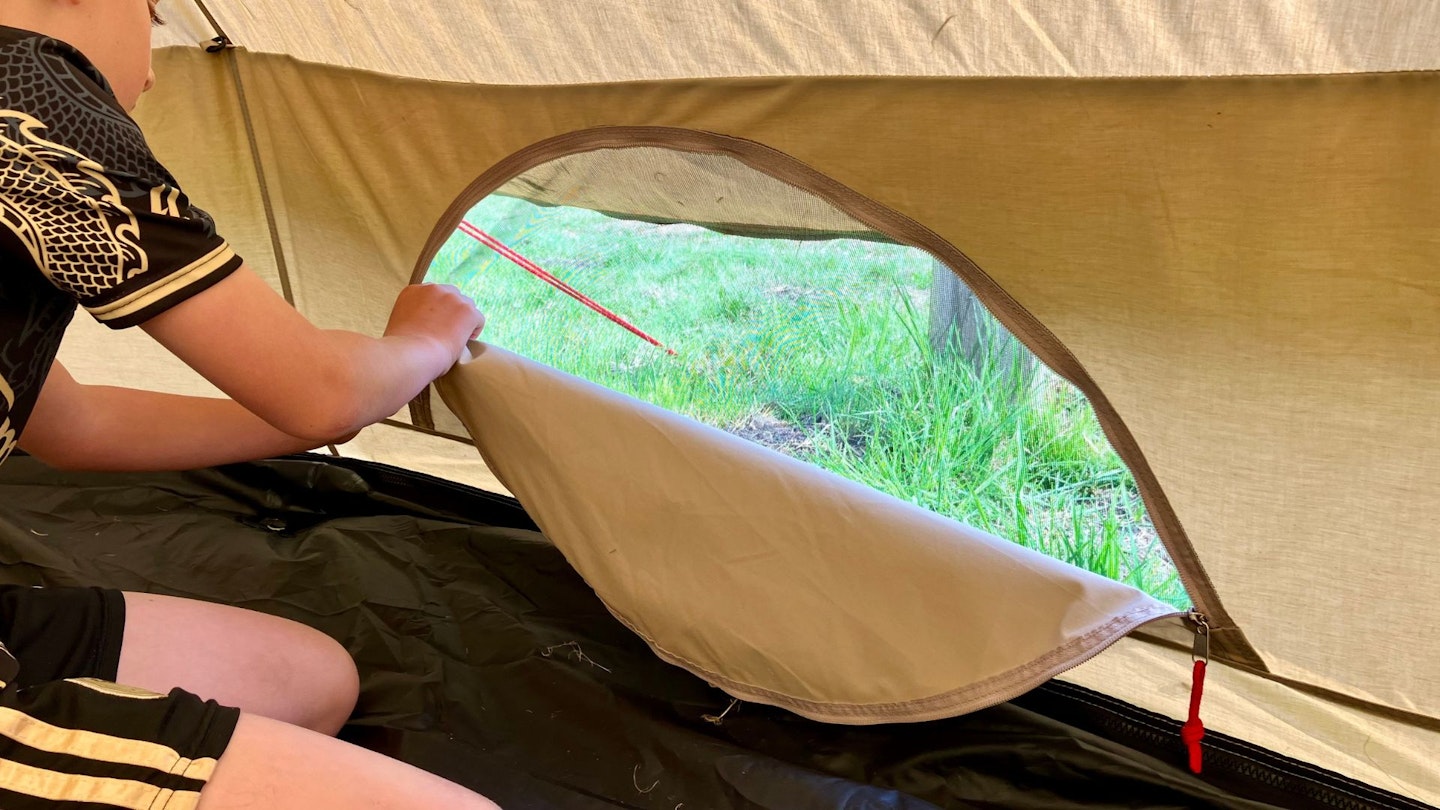
The Klondike has only one entrance, operated by one large vertical zip and two smaller horizontal zips at the base. The door also has two mesh venting windows, which allow you to get some fresh air into the main entrance while it's still closed without letting insects in. And talking of vents, there are three smaller ones at floor level spread out around the main chamber of the tent, which do a great job of creating some extra airflow if the inside of the tent gets hot.
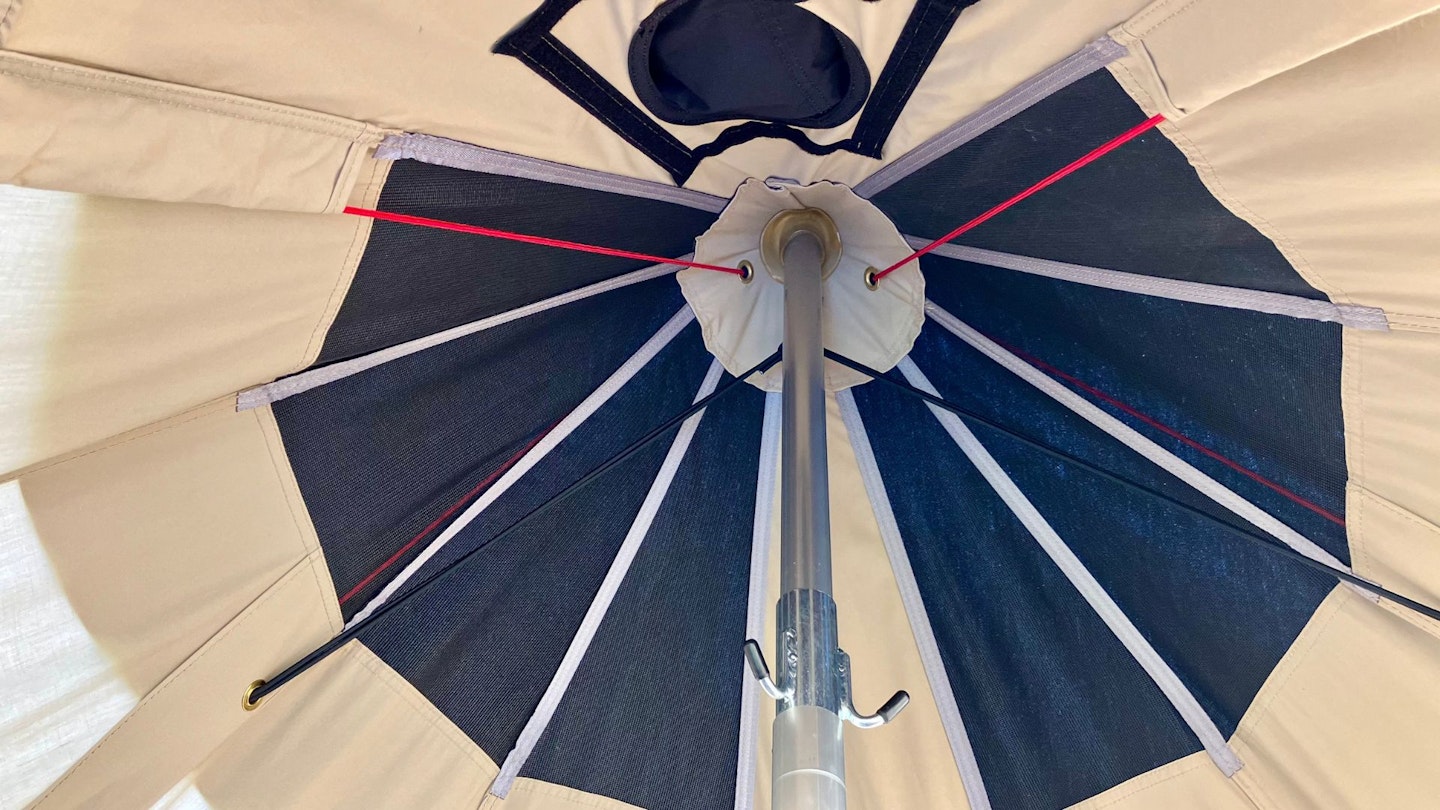
We like the protective eaves that run around the tent to shelter the walls and door from rain runoff. There's also a clever zip which runs down the middle of the groundsheet from the door to the central pole, allowing you to roll the floor back to create a safe area to use the optional stove. Or just to stash muddy boots without making the inside of the tent dirty.
Pitching
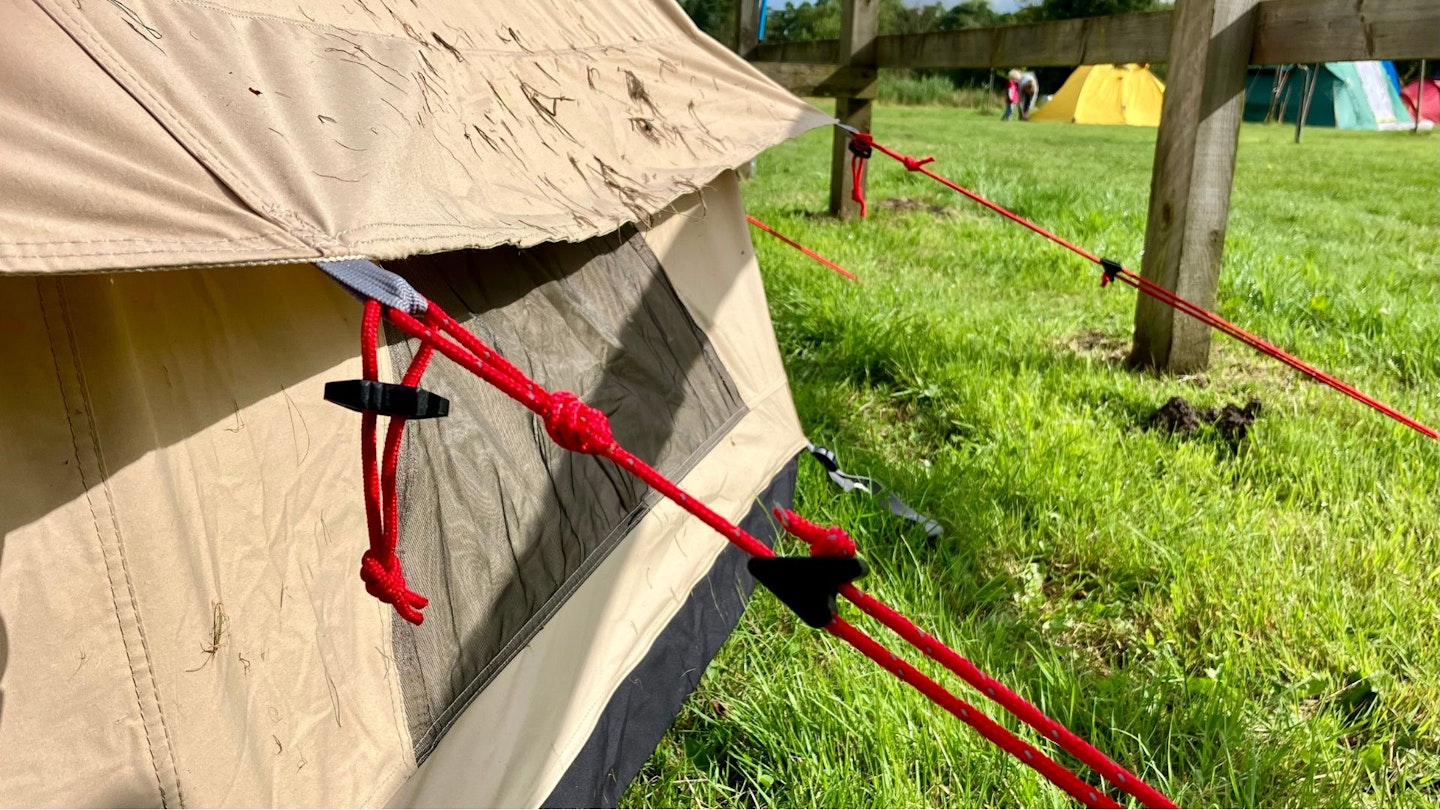
Our absolute favourite thing about the Klondike is how easy it is to pitch. You simply lay the tent flat on the ground, peg out the groundsheet, slot together the aluminium central pole, attach the rubber stoppers to each end, then raise it up in the middle of the tent to get the whole structure upright.
The Robens website suggests it takes around 11 minutes to pitch the Klondike, and we'd say that's probably fairly accurate. And because the whole pitching process revolves around getting that central pole upright and secure, it's also a tent that can easily be pitched by just one person.
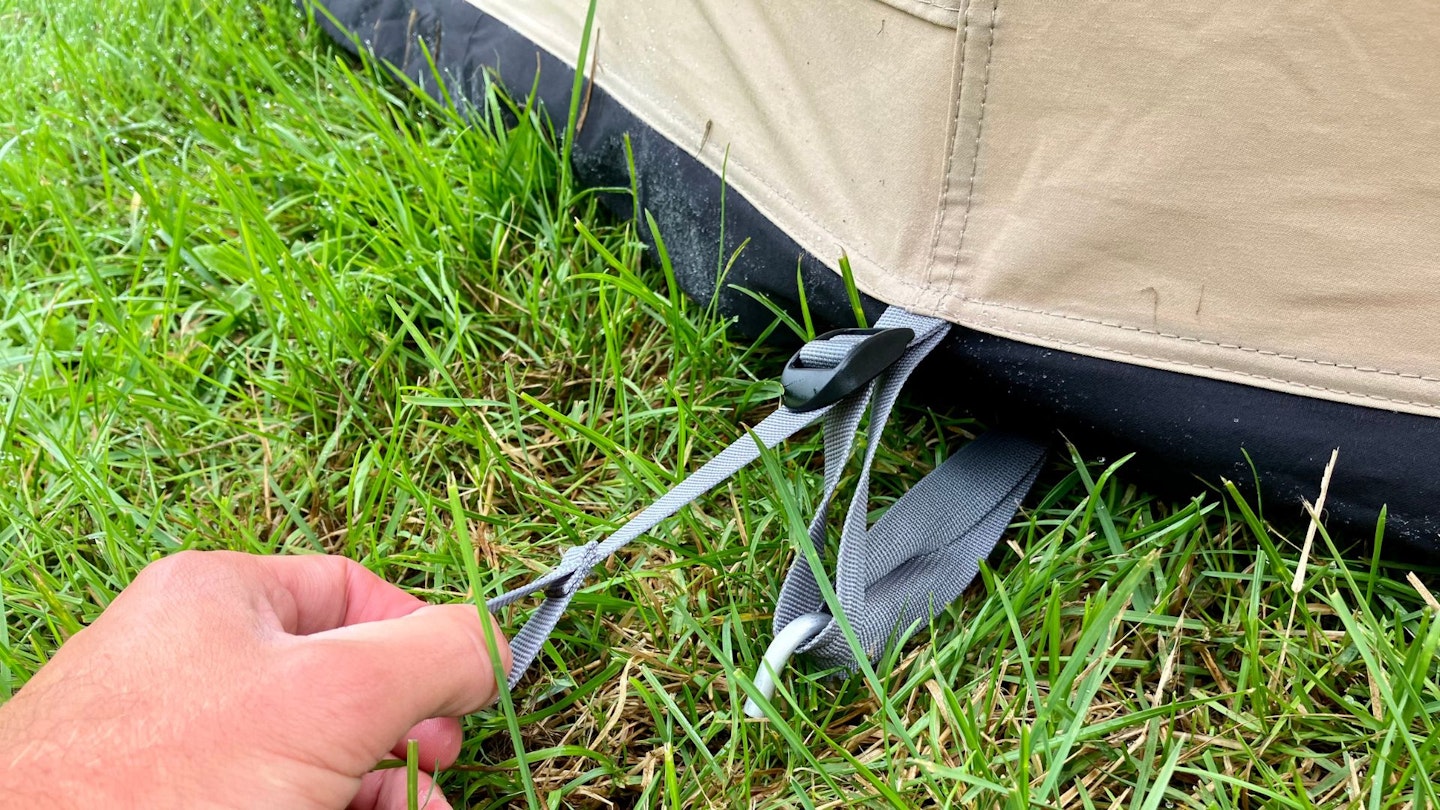
Once the main pole is upright, and you've added in the smaller A-frame pole that creates the shape of the doorway, the next step is to tension out the adjustable peg loops on the groundsheet, then give the tent a bit more shape by pegging and tensioning the guy lines attached to the eaves.
As with most tents, unless you've had freakishly warm and dry weather, the base of the Klondike was wet at the end of our most recent camping trip. So we simply unzipped the groundsheet and hung it over a fence while we packed away the rest of the tent, then stuffed the groundsheet into the carry-bag once it was dry.
And that's about it! We've never before used a tent of this size that's so easy to pitch, and the even better news is that it's just as easy to pack down and put away after you've used it.
Living space and comfort

Our testers think the living space is one of the best things about the Robens Klondike. Our editor Oli camps regularly with his two young sons and the bigger they get (currently aged 8 and 5), the more space they hoover up. The beauty of the Robens Klondike is that it offers plenty of space for two double air beds (see above) while still leaving loads of room for bags, shoes, storage boxes and even little extras like a mat or tray by the doorway to leave your muddy or wet shoes on.
And it's not just the floor dimensions that are impressive (see below) – because the headroom is up there with the best tents we've ever used. The tent is a massive 270cm high with a door height of 175cm, so there's plenty of space for even the tallest adults to stand up and move around inside.
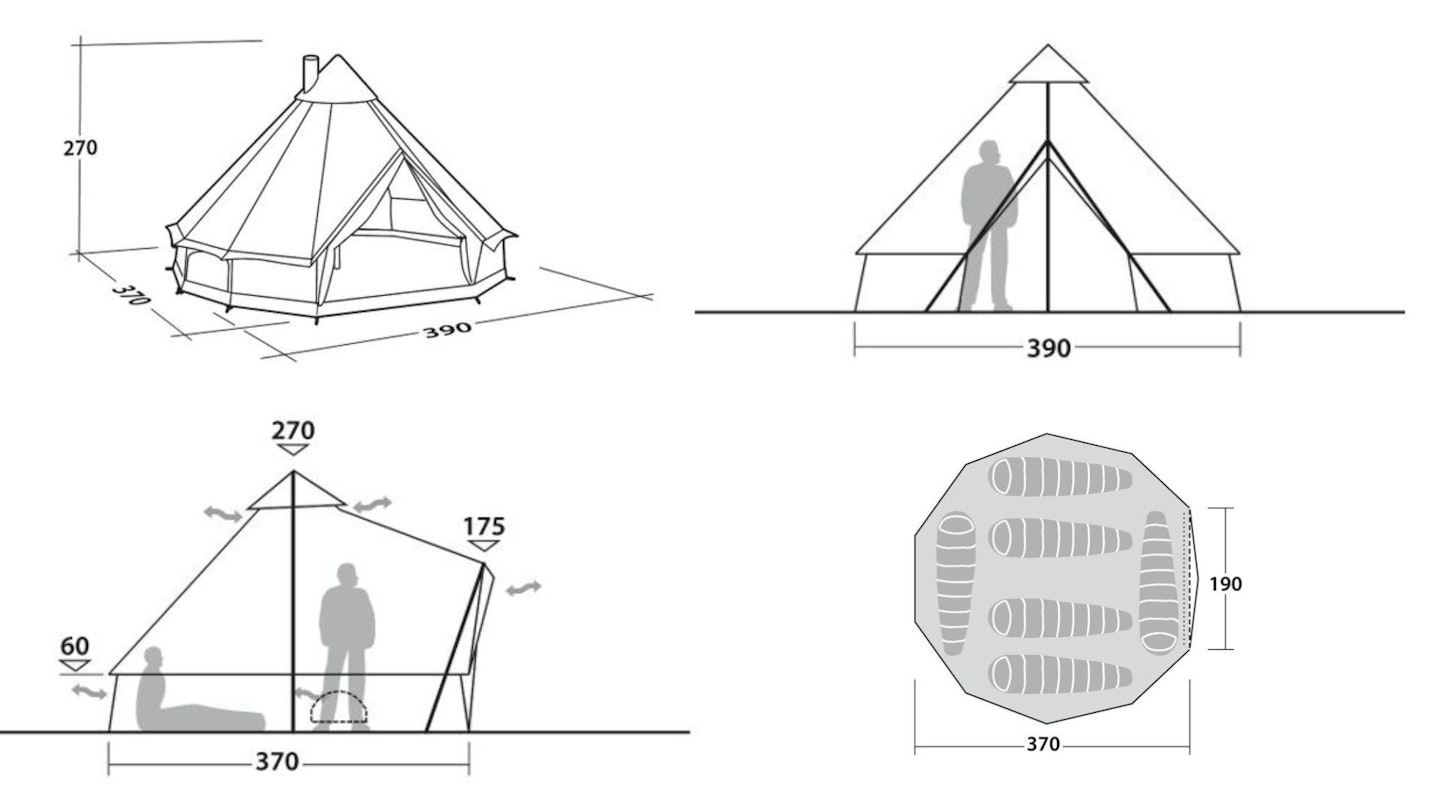
This is another reason why we suggest trying this tent without the inner first. The open living style offers so much space and freedom in terms of the size and style of sleep system you can use, that in our opinion you'd be limiting your options by adding the inner.
The only catch is that without the inner you don't get a lot of light protection. The khaki colouring of the flysheet doesn't block much sunlight, so if you're camping in summer be prepared to get woken up early.
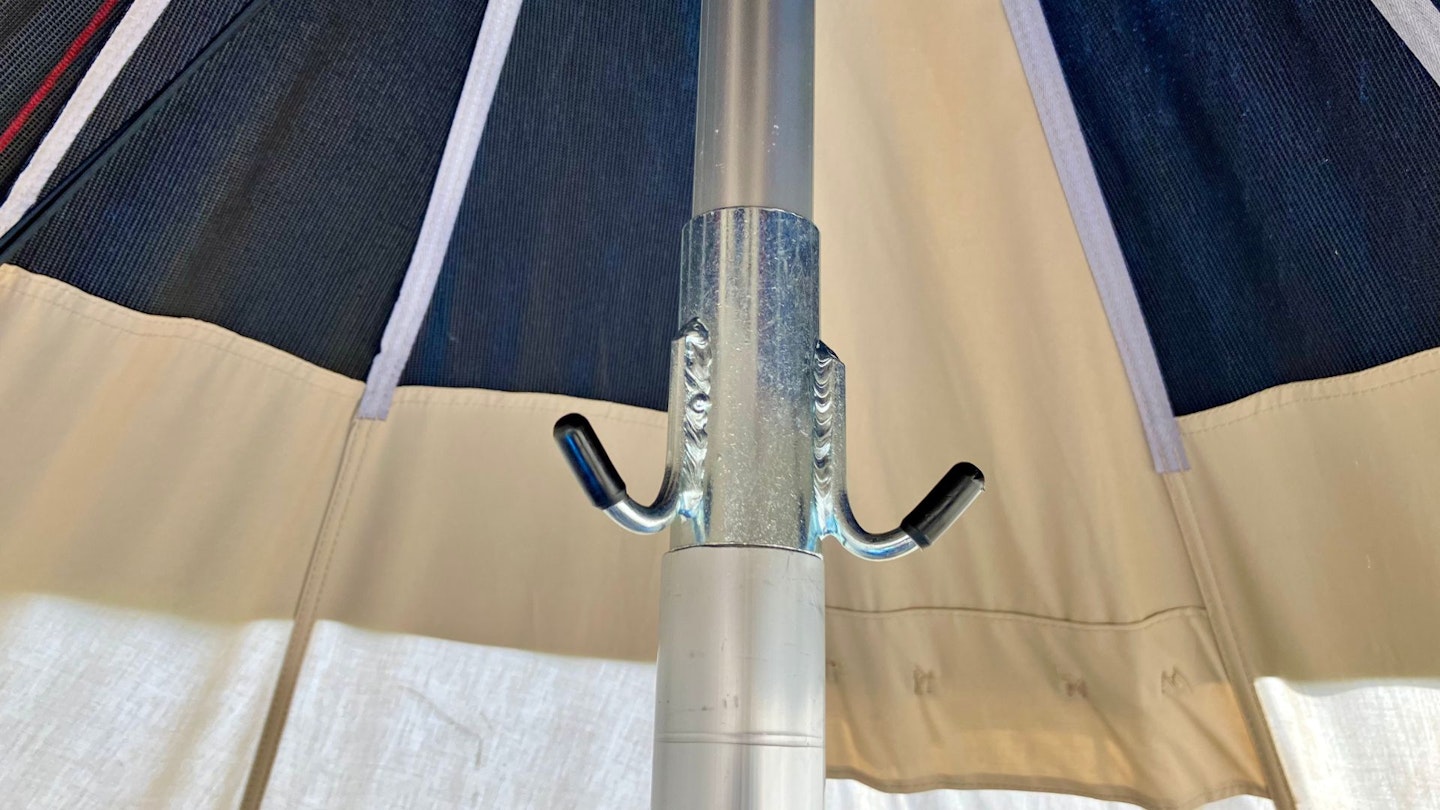
Another drawback of not using the inner is that you don't get many attachment points inside the main tent for things like lanterns or torches, plus there are no stash pockets to help you organise small items like phones and car keys. One feature we do like, though, is the triple hook you can attach to the central pole. This sits at around head height and is perfect for hanging up jackets or looping torches around.
Durability and weather resistance
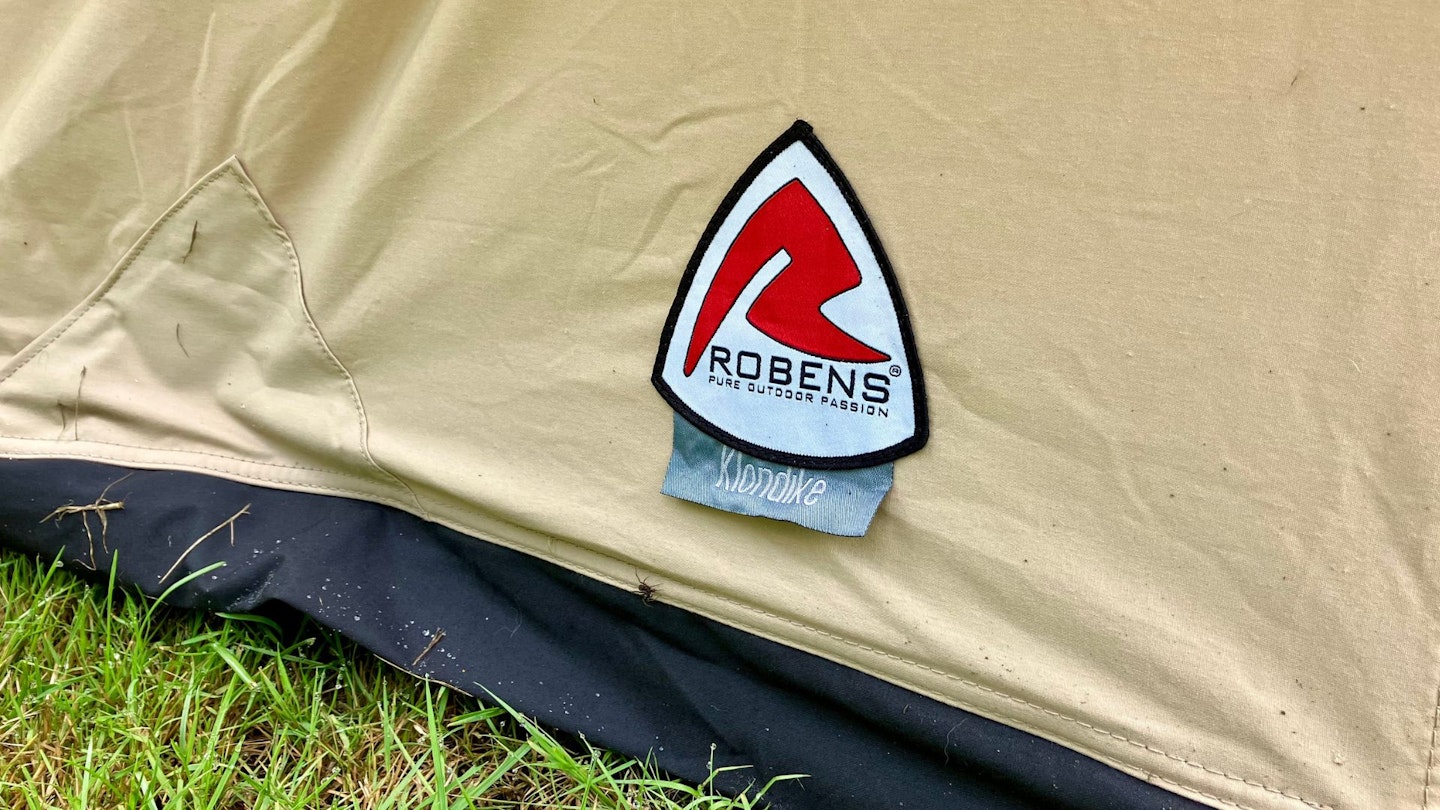
The first weekend we tested the Klondike, we got battered by just about every kind of weather you could imagine. Heavy rain, high winds, thunder, lightning, and even some periods of baking sunshine – and we're pleased to report it stood up to everything perfectly.
We woke up to the sound of the people in tent next to us bailing out after being flooded, and when we peeped out of our cosy little cocoon we saw several tents that had practically collapsed in the night. But the inside of the Klondike was bone dry and the structure was every bit as solid as when we'd pitched it the night before.
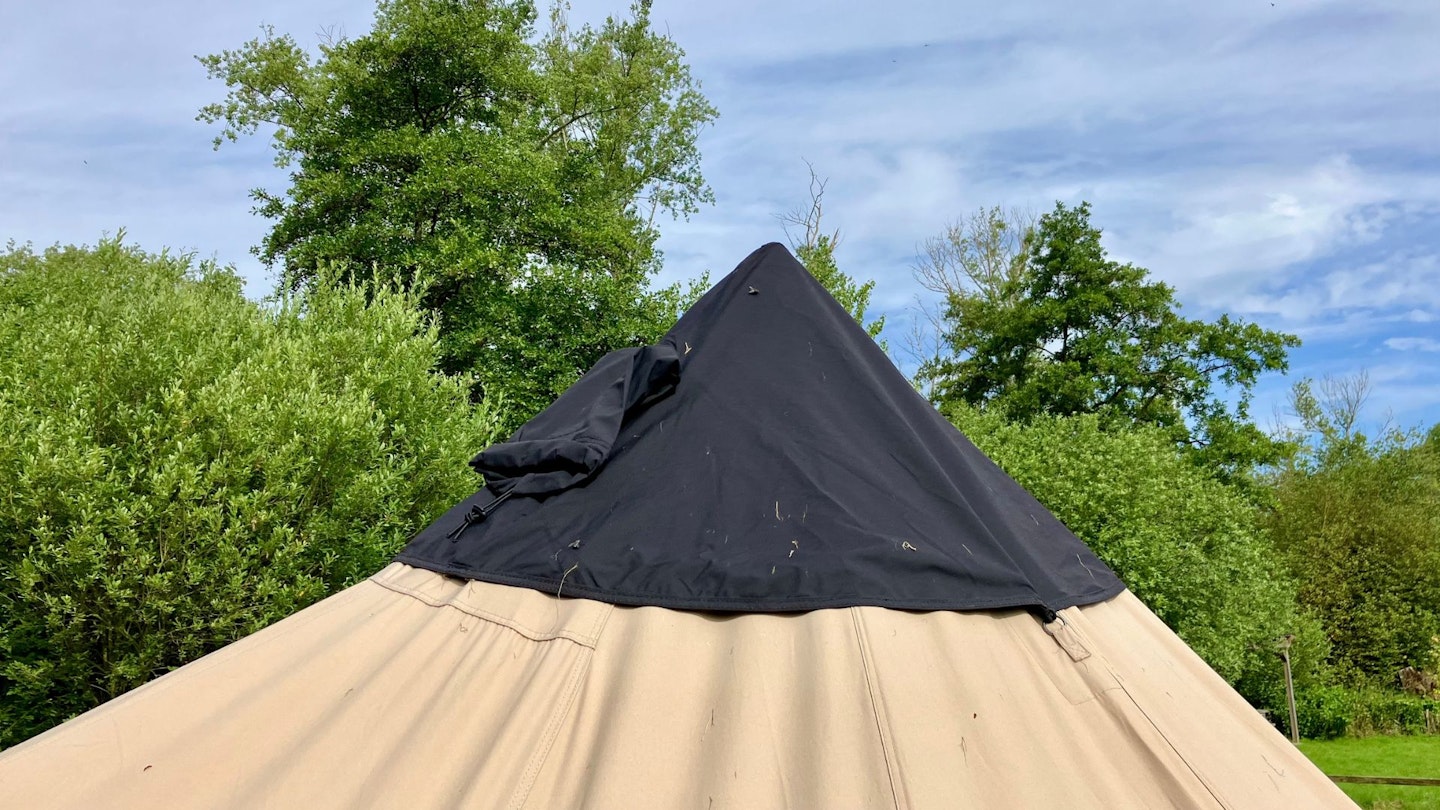
The groundsheet is made from 201T Oxford polyester with a hydrostatic head of 10,000mm and seems very robust and durable. Robens says the tent has been fully wind tested to withstand max speeds of 168km\h, and although we can't vouch for that we've been very impressed by how stable the whole structure feels if you pitch and tension everything out properly.
The pegs feel sturdy; the alloy poles are tough, durable and easy to deploy; the polycotton fabric is top quality; and even the bag it comes in feels premium. So it's top marks from us for both durability and weather resistance.
Sustainability
Like most Robens products, there aren’t too many blatant sustainability features to shout about on the Klondike bell tent, but the fact this tent is so well constructed means it’s a product that should last for many years without being replaced. Which is very important when it comes to reducing the environmental footprint of consumers.
Robens have also started introducing products using recycled materials into their camping range, so look for the Robens Sustain logo when shopping for a new tent on their website.
Price and competition
With an RRP of almost £1000, there's no denying the Robens Klondike is a significant investment in terms of buying a large tent. But when you think about the cost of hiring a bell tent for a weekend away, which you'd be lucky to do for less than £300, you start to realise that the long-term value is quite high.
We've been using the slightly smaller Robens Fairbanks (£795) for many years, which uses the same materials as the Klondike, and our model still doesn't have a scratch on it. So even though the initial outlay for the Klondike is fairly hefty, it may well be the last tent of this size you'll ever need to buy.
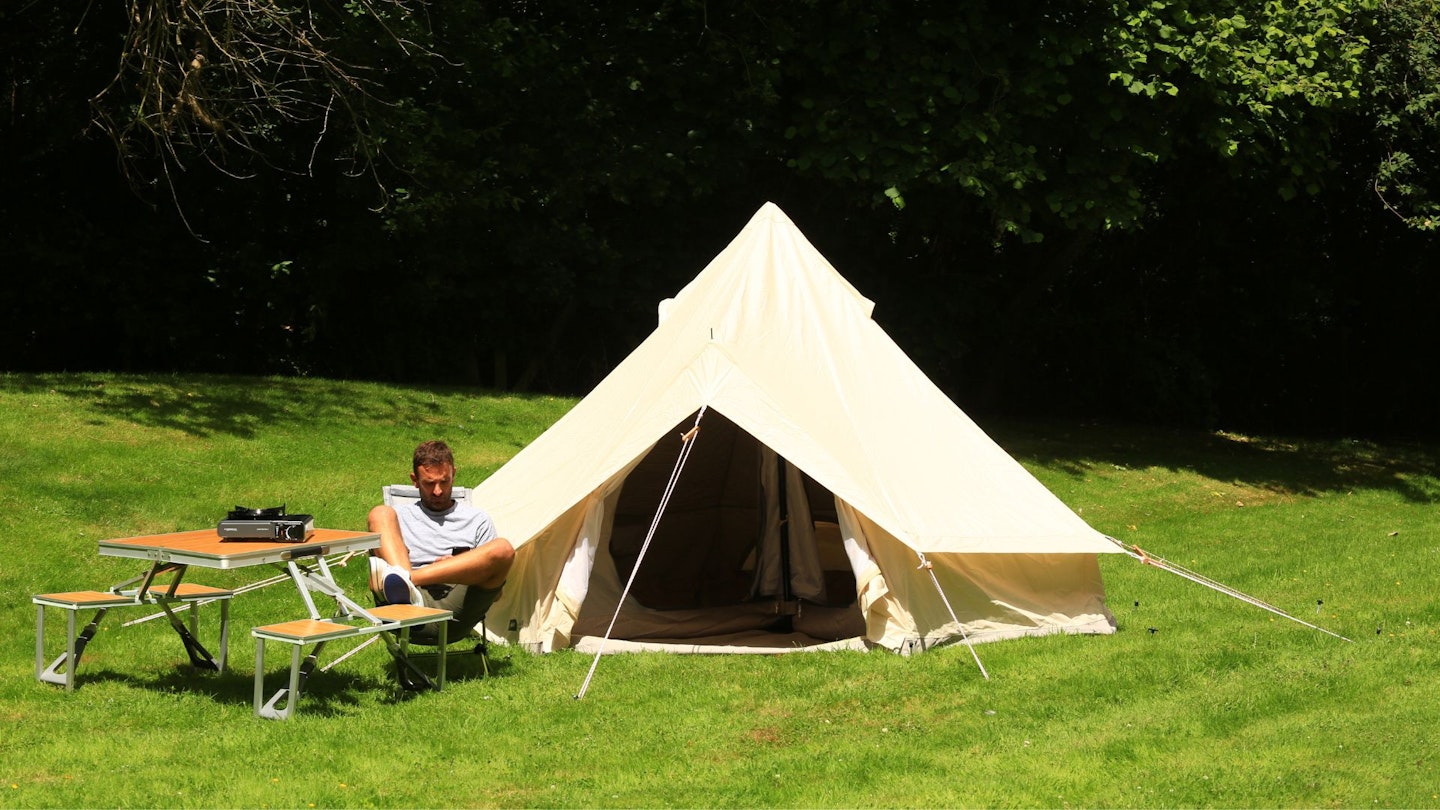
If you're looking for something with a similar style that will leave less of a dent in your wallet, check out the new Roundhouse bell tent from Alpkit. It shares a lot of similarities with the Klondike, at about half the price. We've recently got one in for testing and first impressions are good, although the materials don't feel quite the same quality as the Robens model. Full review of the Roundhouse coming soon!
Verdict
We rarely review a product that we can't pick even a few small flaws in, but the Robens Klondike gets a full 5 stars from us.
Yes, it's an expensive tent, but this is a top-quality bit of kit that will make you the envy of every campsite you ever visit. It looks great, is easy to transport and pitch, has a huge living area, great weatherproofing credentials, and feels like it could last forever.
Shop this product
How we tested

The Robens Klondike is a tent that's been tried and tested by a few members of the LFTO and Trail magazine teams in recent years, and we've all loved it. We've used it with and without a wood burning stove (above), on campsites and in our gardens, and we've thoroughly enjoyed every night we've spent in it.
It most recently came with us on a long weekend of wet and windy camping with eight adults and 13 kids, where it survived being used as a temporary soft play centre during a morning downpour and still came away unscathed. And as you can see from the photos below, we even used it as an indoor cinema on a recent garden camp!
CLICK HERE for more details about how we test gear at LFTO.
